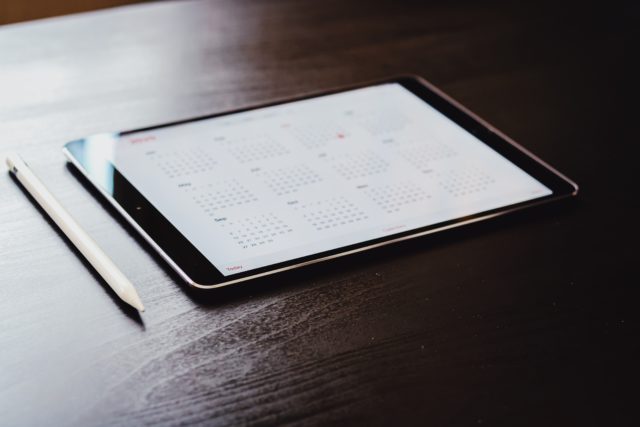
I remember a coach who used to say that he did not believe in luck. He was an avid golfer. When he would make a great shot, someone would inevitably say it was luck. His response was, “The ball went exactly where I planned for it to go.” He resisted the idea of random success. He practiced and played with purpose. We all know that intentions alone are not enough. No one hits a perfect shot every time. However, we do our best when we have a plan.
In life and work, you need a plan too. It starts with a question. How can I make this day the most productive possible? The question defines the intention – a productive day. Once you have a goal, you need a system to accomplish it. One of the most effective productivity systems you can follow is Getting Things Done.
What is Getting Things Done?
David Allen’s best-selling book, Getting Things Done: The Art of Stress Free Productivity, has sold more than 2 million copies and has been translated into 38 different languages.
For more than twenty years, it has been transforming the way many people view productivity. Still, after all these years, we are learning. Productivity is a moving target. To be productive, we have to learn how to apply the principles of GTD to ever-changing circumstances and ever-increasing demands. Fortunately, at Asian Efficiency, we have helped more than 15,000 people get the most out of GTD, and we can help you too.
The Getting Things Done Methodology
By definition, GTD is a personal productivity methodology. According to Allen, all you need to implement it are the following:
- An inbox
- A trash can
- A filing system for reference material
- Several lists
- A calendar
The tools you use (digital or analog) will vary according to your preference. The magic is not in the tool; it is in the method. Getting Things Done gives you the building blocks to create a trusted system. At Asian Efficiency, we have some great resources you can use to learn about the structure of GTD and how it works.
- The best place to start is the book by David Allen (The creator of GTD)
- The Asian Efficiency public GTD resource page.
- There is a a top-rated video series about GTD inside The Dojo, our online productivity community.
Horizons of Focus

Part of the reason that GTD is so useful is the clarity and focus it provides.
When someone is learning how to fly a plane, they are taught how to fly using only the instruments or the gauges. It can be hard to do because it is natural to want to control the plane based on what the pilot can see with his eyes or how his body feels. They are taught to do this because it is dangerous to fly based on what you see and feel.
For example, when the pilot is flying the plane at a high altitude. It can be hard to know if the plane is upright or upside down. A very old flying instruction manual makes the point with a story.
A military and a civilian plane are flying at a high altitude They cannot see the ground clearly. The pilot of the fast military aircraft decides to play a joke and rolls inverted. The civilian pilot, seeing the military plane fly past upside down, and not entirely sure of which way is up or down himself, promptly rolls his plane inverted. So every pilot learns to fly by the gauges.
Getting Things Done gives you a set of gauges to fly by called Horizons of Focus. The six horizons are:
- HORIZON 5: Purpose and Principles
- HORIZON 4: Vision
- HORIZON 3: Goals and Objectives
- HORIZON 2: Areas of Focus and Accountability
- HORIZON 1: Projects
- GROUND: Calendar/Actions
Each horizon represents a perspective that can improve your focus on the best way to work and be productive each day. Clearly defined perspectives inform your daily decision-making process so you will know how to prioritize, schedule your day, and build strong productivity habits.
3 Ways GTD Can Take Your Productivity To The Next Level
1. Prioritize ruthlessly
One of the principles of GTD is that it gives you a “mind like water“
Mind Like Water: A mental and emotional state in which your head is clear, able to create and respond freely, unencumbered with distractions, and split focus. — David Allen
The reason you implement GTD is to give you clarity about what you are doing (and what you are NOT doing). GTD is a methodology that is designed to help people execute on what is most important. However, it still requires an individual to decide what is most important to them. This is where many people get stuck.
Here are two scenarios.
One. You open your computer or phone, and you see a badge indicating 75 overdue tasks. Your system is out of control, and it is discouraging. So you close it and start writing down random things to do on a post-it note. You reason that it is better to start over with a clean slate. It is a reminder that you lack clarity and focus.
Two. Your system is exceptionally organized. There is no bloat. Everything that made it onto one of your lists is something real and meaningful. So what is the problem in scenario 2? The problem is you still don’t have clarity because you don’t know where to start. Without priorities, all you have is a long list of things that should be done at some moment. You can use all of your energy, just deciding what to do instead of doing something.
In both cases, the root problem is a lack of priorities. It is time to recalibrate. You have to be clear on your priorities and then leverage the system to execute on the priorities.
There are two critical success factors for priority-based planning:
- Recognize that your time and energy are limited resources.
- Accept that you cannot do everything
You cannot make room for your to-do list without paying attention to your stop-doing list. Some things need to be eliminated.
Review the horizons of focus

The best way to define your priorities is to review the six horizons of focus.
Start at Horizon 5 by defining your purpose and principles. Allen suggests asking yourself questions like:
- Is this the job you want?
- Is this the lifestyle you want?
- Are you operating within the context of your real values, etc.?
Next, define your high-level priorities in areas such as:
- Health
- Sleep / rest
- Family, friends, relationships
- Productive work
Continue working your way through each level of the horizons until you have the clarity you need to plan your day with confidence.
Plan with confidence
Planning your day means choosing what to do and what not to do. The traditional approach involves assigning a priority level to individual tasks. “David Allen’s GTD approach has always been that priority codes are too simple for the complexity of most people’s changing lives.”
The preferred method in GTD is to start with a clear focus based on the six horizons of focus. When your priorities are well established, you will intuitively know what you should be working on and not be distracted by the things you are not doing (i.e., mind like water).
2. Schedule your work on the calendar

Your priorities should be reflected in where you spend your time. In the horizons of focus, the calendar is at the ground level. It is where work happens. To keep your priorities from getting lost in the system, you have to schedule what is important.
Hard Landscape
First, create your “hard landscape.” The hard landscape represents an appointment or event happening at a specific time. David Allen calls it “sacred territory”. In his book, Getting Things Done, he says, “If you write something there, it must get done that day or not at all.”
Some examples of a hard landscape include:
- Mandatory meeting
- Doctor’s appointment
- Daily workout
- Vacation
Soft Landscape
After you create your hard landscape, it may be helpful to add a second layer of commitments that serve to protect your priorities (soft landscape).
For example:
- Schedule morning ritual
- Schedule deep work
- Schedule rest
- Schedule rejuvenation
- Schedule weekly review
The soft landscape is a way to place boundaries around your priorities. Well-defined boundaries empower you to say no to distractions and demands that conflict with your most important commitments.
3. Use Habit stacking to build your GTD habits
GTD is a system of daily habits, not random activities. It works because it is integrated into your regular workflow. How well you maintain those habits will have a direct impact on how much you trust your system.
In his book, Atomic Habits: An Easy & Proven Way to Build Good Habits & Break Bad Ones, author James Clear states, “You often decide what to do next based on what you have just finished doing.” James suggests that you can use this aspect of human behavior to build new habits. He calls it habit stacking. You install a new habit in your life by connecting the behavior to something you already do.
In the case of GTD, you might schedule your weekly review to follow eating breakfast on Sunday morning. The secret is to find something that is already established as a habit in your life and connect the new behavior to it. This form of habit stacking can help you stay in control of your GTD workflow.
Next Steps
The goal of this article is to help you take your implementation of GTD to the next level in three simple steps:
- Identify your priorities
- Use your calendar to protect your time
- Implement habit stacking to maintain your workflow
A great next step would be to review your calendar to insure you are using it to protect your priorities.
- Is your calendar current with your hard landscape?
- Is your calendar current with your soft landscape?
